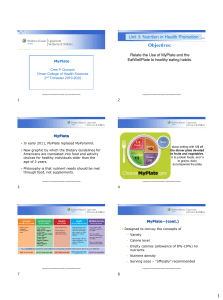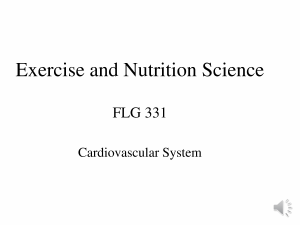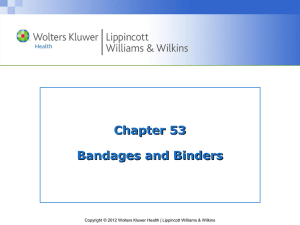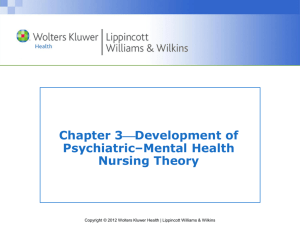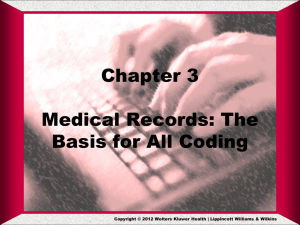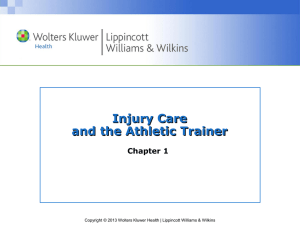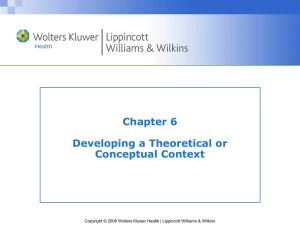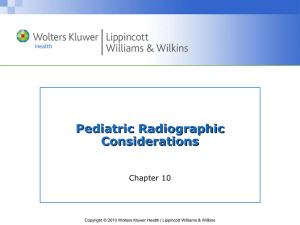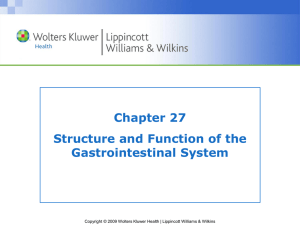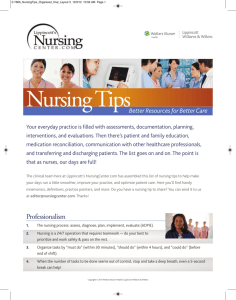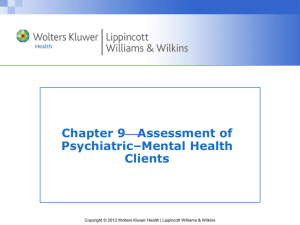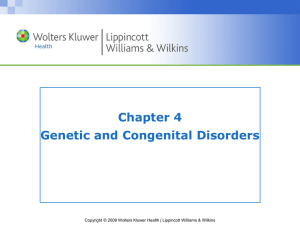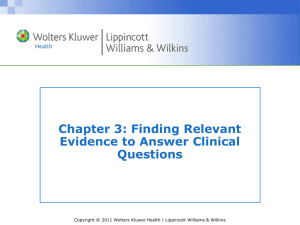Detailed Neurologic Exam Motor System: Muscle Strength
advertisement
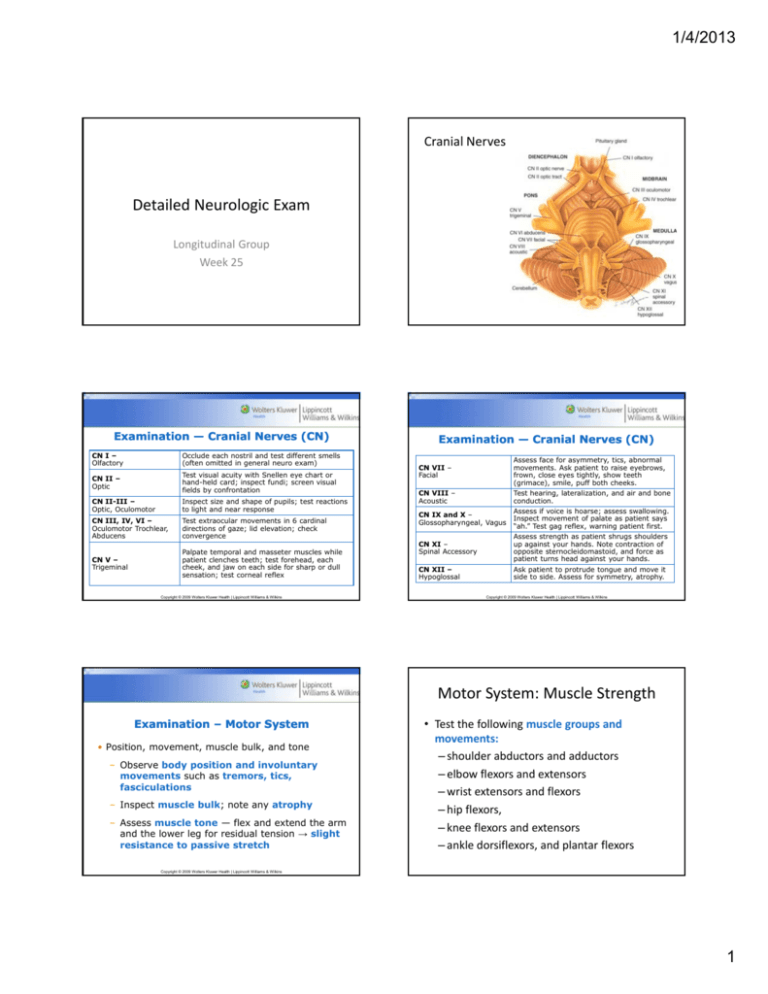
1/4/2013 Cranial Nerves Detailed Neurologic Exam Longitudinal Group Week 25 Examination — Cranial Nerves (CN) CN I – Olfactory Occlude each nostril and test different smells (often omitted in general neuro exam) CN II – Optic Test visual acuity with Snellen eye chart or hand-held card; inspect fundi; screen visual fields by confrontation CN II-III – Optic, Oculomotor Inspect size and shape of pupils; test reactions to light and near response CN III, IV, VI – Oculomotor Trochlear, Abducens Test extraocular movements in 6 cardinal directions of gaze; lid elevation; check convergence CN V – Trigeminal Palpate temporal and masseter muscles while patient clenches teeth; test forehead, each cheek, and jaw on each side for sharp or dull sensation; test corneal reflex Copyright © 2009 Wolters Kluwer Health | Lippincott Williams & Wilkins Examination — Cranial Nerves (CN) CN VII – Facial Assess face for asymmetry, tics, abnormal movements. Ask patient to raise eyebrows, frown, close eyes tightly, show teeth (grimace), smile, puff both cheeks. CN VIII – Acoustic Test hearing, g, lateralization,, and air and bone conduction. CN IX and X – Glossopharyngeal, Vagus CN XI – Spinal Accessory CN XII – Hypoglossal Assess if voice is hoarse; assess swallowing. Inspect movement of palate as patient says “ah.” Test gag reflex, warning patient first. Assess strength as patient shrugs shoulders up against your hands. Note contraction of opposite sternocleidomastoid, and force as patient turns head against your hands. Ask patient to protrude tongue and move it side to side. Assess for symmetry, atrophy. Copyright © 2009 Wolters Kluwer Health | Lippincott Williams & Wilkins Motor System: Muscle Strength Examination – Motor System • Position, movement, muscle bulk, and tone – Observe body position and involuntary movements such as tremors, tics, fasciculations – Inspect muscle bulk; note any atrophy – Assess muscle tone — flex and extend the arm and the lower leg for residual tension → slight resistance to passive stretch • Test the following muscle groups and movements: – shoulder abductors and adductors – elbow flexors and extensors lb fl d t – wrist extensors and flexors – hip flexors, – knee flexors and extensors – ankle dorsiflexors, and plantar flexors Copyright © 2009 Wolters Kluwer Health | Lippincott Williams & Wilkins 1 1/4/2013 Examination – Muscle Strength 0 1 2 3 4 5 Muscle strength is graded on a 0 to 5 scale: – No muscular contraction detected – A barely detectable flicker or trace of contraction – Active movement of the body part with gravity eliminated – Active A ti movementt against i t gravity it – Active movement against gravity and some resistance – Active movement against full resistance without evident fatigue; this is normal muscle strength • Ask the patient to move actively against your opposing resistance; assign Grade 5 if the patient overcomes your opposing movement • If the patient can only move against gravity, assign Grade 3 Examination – Deep Tendon Reflexes: General Principles • Select a properly weighted hammer • Encourage the patient to relax; position the limbs properly and symmetrically • Hold the reflex hammer loosely between your thumb and index finger so that is swings freely in an arc • Strike the tendon with a brisk direct movement; use the minimum force needed to obtain a response • Use reinforcement when needed • Grade the response Copyright © 2009 Wolters Kluwer Health | Lippincott Williams & Wilkins Copyright © 2009 Wolters Kluwer Health | Lippincott Williams & Wilkins Elicit the following reflexes __ Biceps reflex (C5‐6) __ Triceps reflex (C6‐7) __ Brachioradialis (C5‐6) __ Knee reflex (L2‐4) __ Ankle reflex (S1) __ Plantar response (Babinski) – (L5‐S1) Examination – Reflexes: Scale for Grading Reflexes are usually graded on a 0 to 4+ scale 4+ Very brisk, hyperactive, with clonus (rhythmic oscillations ill ti b between t fl flexion i and d extension) t i ) 3+ Brisker than average; possibly but not necessarily indicative of disease 2+ Average; normal 1+ Somewhat diminished; low normal 0 No response Copyright © 2009 Wolters Kluwer Health | Lippincott Williams & Wilkins Sensory System Compare right vs left and proximal vs distal ___Test pain using pin prick (broken cotton swab or safety pin). Discard after single use. If abnormal, it would be reasonable to test temperature using test tubes of warm and cold water. (spinothalamic tracts) ___Test position and vibration using a 128‐Hz tuning fork. (dorsal columns) ___Test light touch (uses both pathways) ___Test discriminative sensation by placing object in patient’s hand (stereognosis), tracing a number in patient’s palm (graphesthesia), or with 2‐point discrimination. Coordination ___1. Assess cerebellar function using rapid alternating movements of arms, finger tapping, and/or foot tapping on examiner’s hand. ___2. Assess cerebellar function using point‐to‐point movements, including the finger‐to‐nose test and heel‐to‐ shin test. ___3. Evaluate the global neurologic functions of gait, including tandem walking (heel‐to‐toe), toe walking, and heel walking. 2 1/4/2013 Coordination ‐ Stance ___4. Ask patients to rise from a sitting position without arm support (tests proximal muscle strength) ___5. Perform Romberg test: Put feet together and close both eyes for 30‐60 seconds. Monitor for significant y g swaying or falling when eyes are closed (sign of loss of position sense) ___6. Test for Pronator drift: Ask patient to stand with both arms out (palms up) and eyes closed. Then tap arms briskly downward. Patients should return arms to horizontal position in smooth fashion. 3
